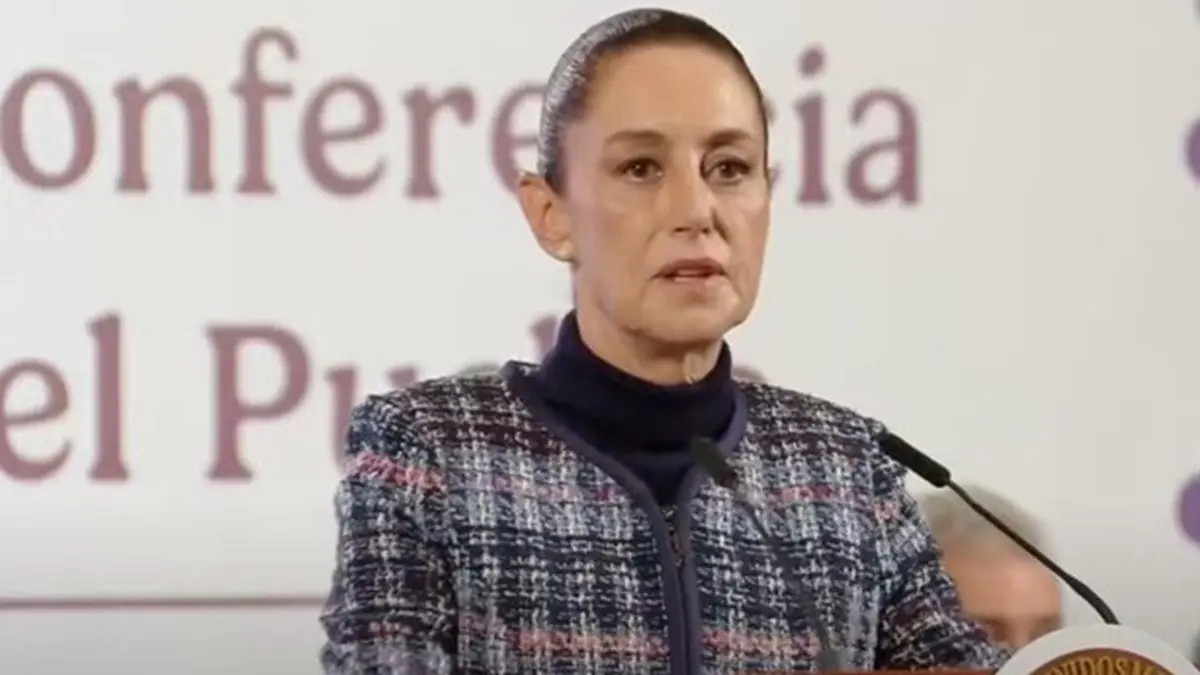Judicial Reform Strengthens Justice in Mexico: President-Elect Claudia Sheinbaum

President-elect Claudia Sheinbaum (C) and outgoing President Andres Manuel Lopez Obrador (R), Sept. 2024. X/ @SentidoComunMx_
September 11, 2024 Hour: 2:12 pm
‘The regime of corruption and privileges is left in the past. We are building a true democracy and a true rule of law,” she stressed.
On Wednesday, President-elect Claudia Sheinbaum affirmed that the approval of the judicial reform will strengthen the Mexican justice system.
RELATED:
Mexican Senate Approves Reform of the Judiciary
“I congratulate the senators from our movement for the approval of the judicial reform. The administration of justice in our country will be strengthened with the election of judges, magistrates, and ministers of the Supreme Court,” said the leader of the National Regeneration Movement (Morena), who will take office as president on October 1.
Hours earlier, with 86 votes in favor and 41 against, the Senate approved the constitutional reform initiative presented by President Andres Manuel Lopez Obrador (AMLO). This occurred amid unprecedented protests by judges and judiciary workers, who stormed the Senate chamber, forcing legislators to hold the session at an alternate location.
“With each passing day, the regime of corruption and privileges is left in the past. We are building a true democracy and a true rule of law. ‘Demos’ means people, and ‘Kratos’ means power,” Sheinbaum said, emphasizing that the judicial reform reflects ‘the power of the people.’
Once approved by the Senate, the judicial reform must be ratified by 17 of the country’s 32 state legislatures. Its main aspects are outlined below.
1. Popular Election of Judges
The reform proposes the popular election of members of the Supreme Court of Justice, the Electoral Tribunal of the Federal Judiciary (TEPFJ), a new Judicial Discipline Tribunal, and all district judges and circuit magistrates in the country.
In total, 1,688 positions would be subject to election, of which 21 would be at the national level, and the rest would be divided by state. Regarding the planned timeline, Supreme Court justices and half of the district judges and magistrates would be elected in 2025, with the other half to be elected in 2027.
2. Changes to the Supreme Court
The reform proposes reducing the number of Supreme Court members from 11 to 9. They will serve for 12 years. It also eliminates the two chambers of the Court, as the institution will now only convene in full.
To be eligible for the Supreme Court, candidates must be over 35 years old, have ten years of legal experience, and not have held public office in the year prior to their election.
There would be no possibility of a lifetime pension upon retirement, and the remuneration of Court members can never exceed that of the President of the Republic.
3. A New Judicial Discipline Tribunal
The Federal Judiciary Council (CJF), which is the body responsible for internal administration and oversight of the judiciary, will be able to receive complaints from anyone and investigate ministers, magistrates, judges, and judicial personnel for acts contrary to the law.
The CJF would be reduced from seven to five members, with one appointed by the executive, one by the Senate, and the rest by the Supreme Court. CJF members will serve six-year terms.
4. Anonymous Judges
The reform introduces the possibility of “anonymous judges.” They would preside over cases involving drug trafficking and high-level violence anonymously to ensure their safety and independence from extortion and threats.
Other countries such as Brazil, Peru, Colombia, and El Salvador have also implemented anonymous judges. In Mexico’s case, their powers would be outlined in the Constitution.
teleSUR/ JF Sources: EFE






